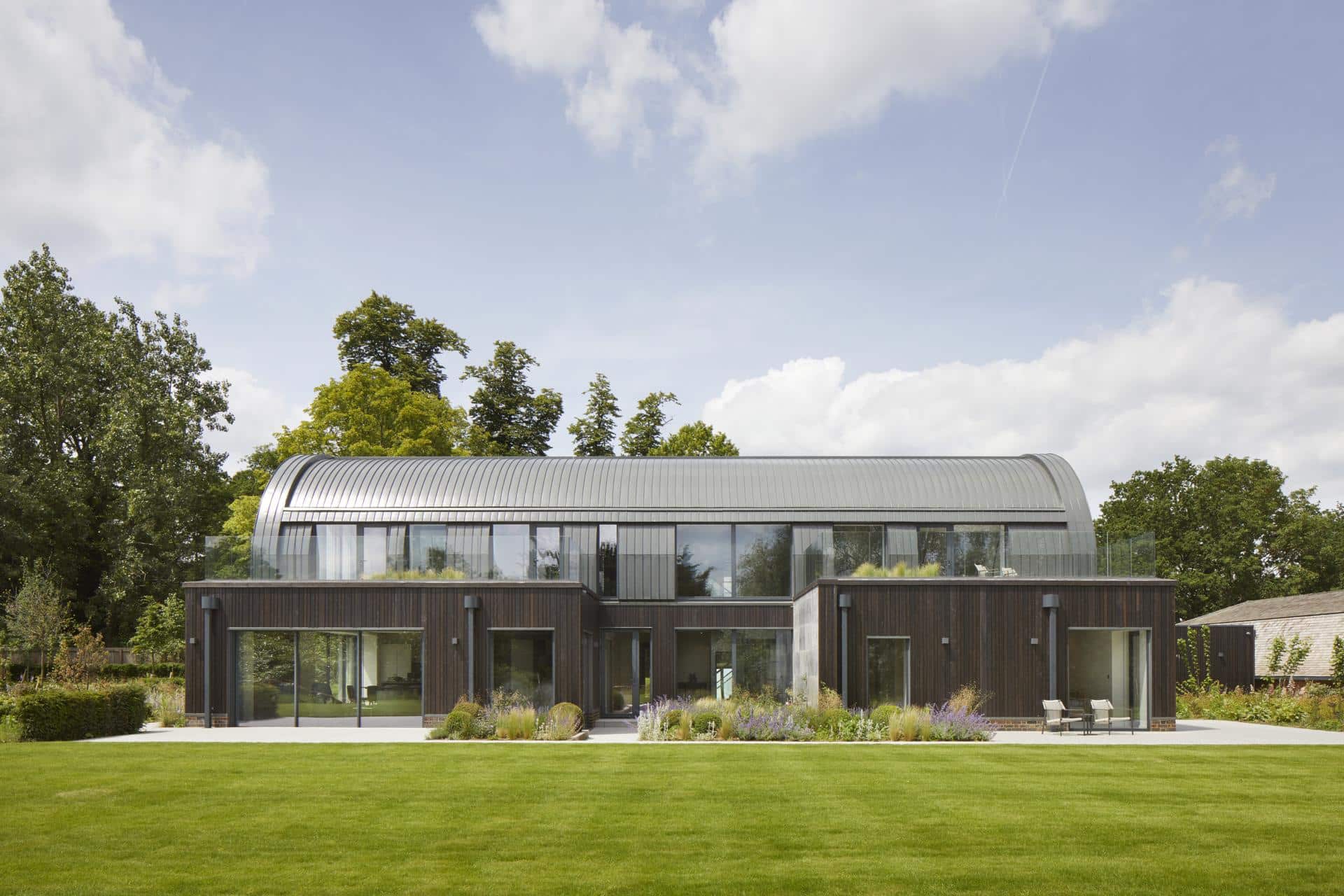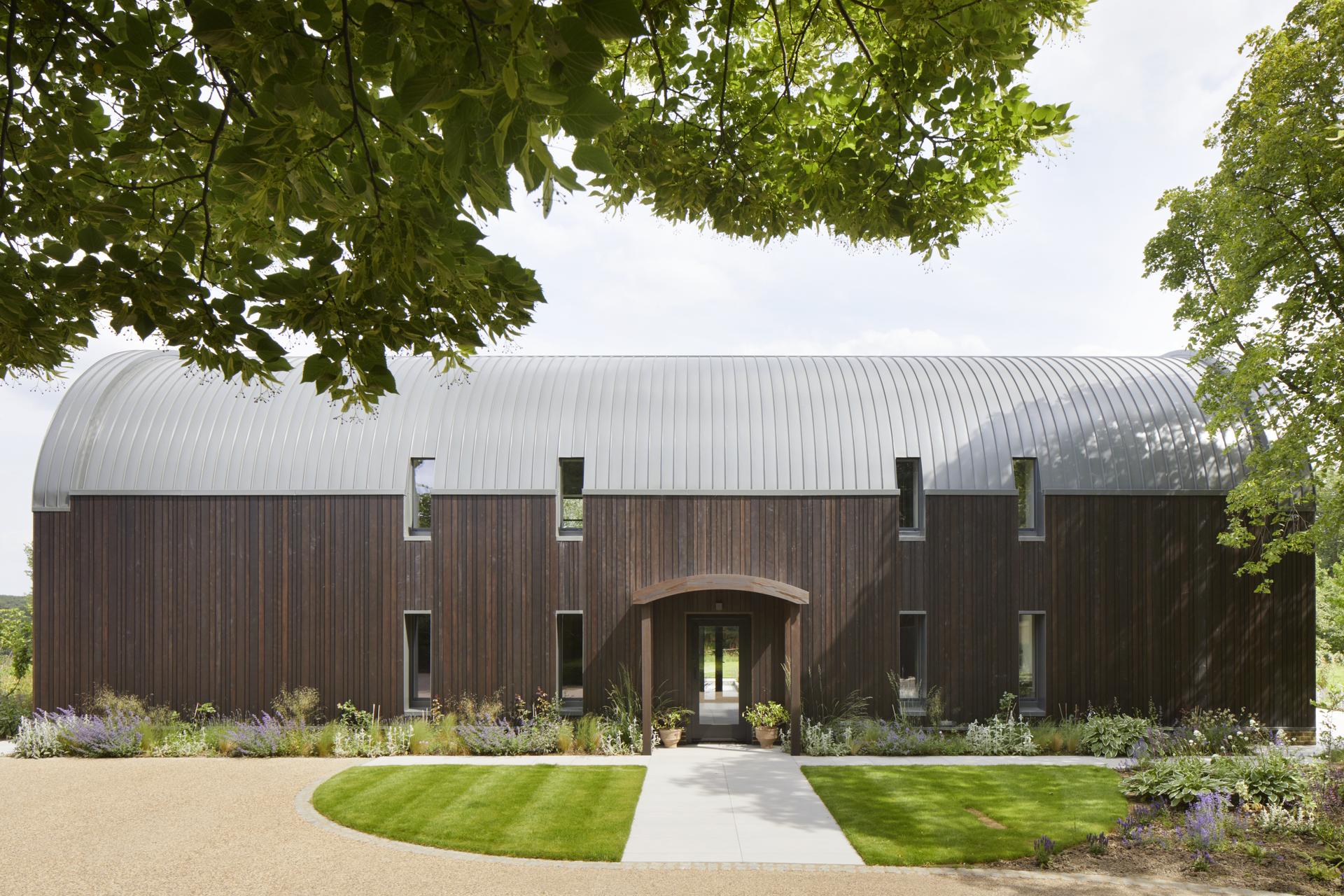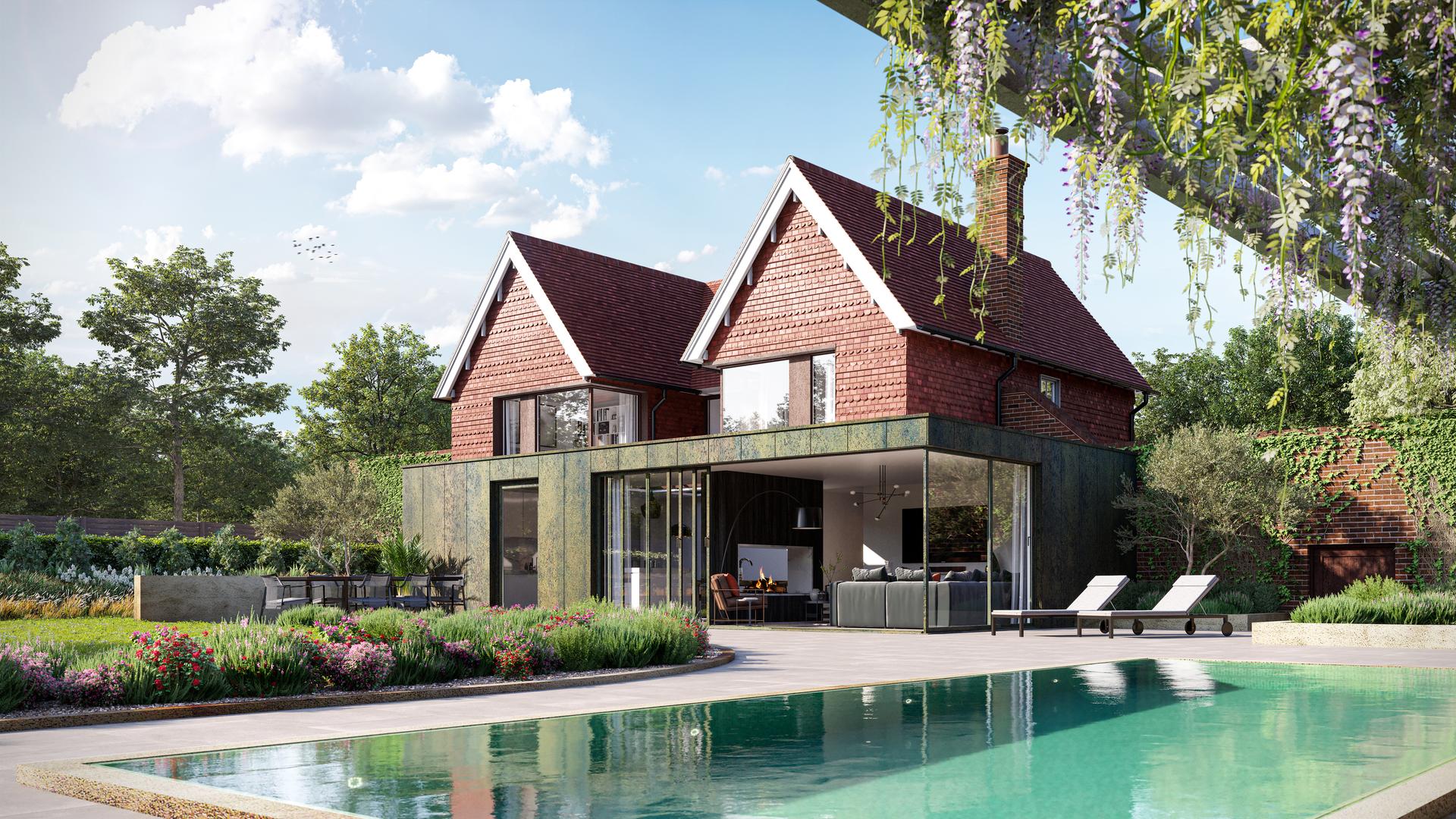Greenbelt Land
Green Belt Land is protected areas of open space which are situated throughout the UK, though most are located within England. Gaining planning permission within a Green Belt area is complex and you will need to seek specialist advice to help you through the process. Here are some of the most commonly asked questions to help guide you.
What is the Green Belt?
The Green Belt is a special part of our country and as such should be treated this way when thinking about planning and development. It was first conceived in 1930 and implemented by the 1947 Town and Country Planning Act. The Green Belt boundaries protect open countryside around cities and towns from becoming built up, to prevent urban sprawl, and for this reason the major Green Belts are located around urban centres such as London, Birmingham and Manchester.
Rural land beyond the Green Belt is often protected in a similar fashion to Green Belt Land. These areas can come under a multitude of names such as ‘open countryside’ and ‘area beyond the Green Belt’ to name a few. These locations require careful consideration in a similar mindset to Green Belt Planning. Something that Clear and Chartered Town Planners have vast experience within.
How do I know if my land is in Green Belt?
A detailed view of where Green Belt areas are located can be found at the www.planningportal.co.uk.
What does Green Belt mean?
The UK’s Green Belt covers an area of 1.6m hectares, which is about 12% of the area of England and has 5 key purposes:
- to check the unrestricted sprawl of large built-up areas
- to prevent neighbouring towns merging into one another
- to assist in safeguarding the countryside from encroachment
- to preserve the setting and special character of historic towns
- to assist in urban regeneration, by encouraging the redevelopment of previously developed land in built up areas, derelict land in urban locations and urban landscape settings
What is the difference between Green Belt and Conservation Areas?
Conservation Areas are listed as places with special architectural and/or historical interest. There are approximately 10,000 conservation areas in England, with some Conservation Areas located within the Green Belt and others in more urban locations.
Conservation Areas require careful design consideration to maintain or enhance the character setting. This does not mean copying design, quite the opposite, it means providing a change within such areas to improve the overall setting. Such stance can be done in a variety of ways and each bespoke to the setting. Indeed even a location within the Green Belt and not in a Conservation Area, would also need to demonstrate an improvement in overall setting, with design and planning quality under the microscope.
Conservation Areas vary greatly in their nature and character and their designation does not only purport to the quality of buildings but historical context. Conservation Areas are designated heritage assets. These designations can range from the centres of historic towns through to fishing villages, country houses set in historic parks and historic transport links.
If you have an idea for a project within Green Belt get in touch to discuss it with us.

Points to Consider
These are the main areas of consideration when tackling alterations within a Conservation Area, whether its in the Green Belt or not:
- High Quality design is crucial to demonstrate suitability for change.
- Justify why the change maintains and/or enhances the designated heritage asset; providing the design is of high quality, this should be relatively straightforward.
- Changes to the external appearance of a building in a conservation area will normally require planning permission, and some permitted development rights are curtailed.
- Demolition of a building within a conservation area will require planning permission.
- All tree work within a conservation area must be notified to the local planning authority six weeks in advance for their approval.
- Remember, Conservation Areas can also be within Green Belt land.
What are the Regulations for Building on Green Belt Land
Building within the Green Belt is generally restricted and needs to meet exceptions set out within the National Planning Policy Framework and the local planning departments Local Plan. Development outside of these exceptions must comprise of very special circumstances to gain planning permission.
New developments and extensions within the Green Belt must consider the context and how they will fit in with the natural surroundings, and improve the setting visually and environmentally.
Maintaining and if possible improving openness within the Green Belt is crucial. Openness is considered even on plots which are not seen from public vantage points, and having a clear understanding of what openness can be achieved, is a key component on selecting a design team for your project.
A combination of meeting an exception to development, and it comprising of a very special circumstance, can result in the best of developments which create the most diverse and interesting of properties. After all, living within the Green Belt is special and as such so should your home.
Some statistics
35% of all Green Belt land remains for agricultural purpose. However, in the past decade 24,000 homes have been constructed within the Green Belt and in 2020, local authorities received planning applications for the construction of 35,000 additional homes on Green Belt land.
Should we build on the Green Belt?
There are a few schools of thought about building on the green belt and the subject provokes a lot of controversial debate. There is no doubt that demand for houses within urban areas is outstripping supply, and the want for easily commutable rural homes are much desired. Selecting the right Green Belt site can improve setting and openness, and it is estimated that around 800,000 new homes are required in London alone to meet the current demand, This has a knock on effect for those wanting to be slightly further out to gain more space.
The Green Belt is not as many people believe, land which has ecological or agricultural value, and it has not been chosen for its natural beauty or wildlife. Most of it is privately owned and not accessible to the public, and only around 45% of it is green. Much of the Green Belt is already developed and a great amount of this is historically developed ready for improvement. The Green Belt exists to stop urban sprawl and to maintain a more rural setting around large built up areas, to stop towns and cities merging into one another.
Protecting the Green Belt land does not stop development, and good development that replaces poor building forms within the Green Belt is often welcomed by Councils. Presenting the best case forward improves chances of success, and many Green Belt planning applications are multi-stranded, to showcase the improvements which can be achieved.
Dispelling the Myth
It is a myth that all of our countryside is being concreted over, in reality only about 10% of the UK is actually built upon with 4% of land classed as built-up areas. Well considered development within the Green Belt can bring forward environmental and social improvement.
What’s the alternative to building on the Green Belt?
Local councils could avoid using Green Belt land, and a lot of extra housing space could be created within towns and cities by utilising existing previously developed sites (derelict land which now lies dormant), estimates suggest that redevelopment of these sites alone could create 1 million new homes across the UK. Similarly, tired high streets and redundant retail parks could be used for urban regeneration. We have great specialism in creating new developments on inefficiently used urban land. However, this does not stop the re-use of already developed buildings and land within the Green Belt to create one off bespoke homes.
We are firm believers that development within the Green Belt should be of the highest standards. It’s a special location and should be considered as such to create one-off architect designed homes, rather than using it to create large housing estates. Low density and high quality for the Green Belt and high density and high quality for urban locations
Can you get planning permission on Green Belt Land?
We are highly experienced at assessing and taking forward sites which have a good chance of gaining planning permission within the Green Belt. An early feasibility assessment of your site and its development opportunities will be vital in pursuing the correct form on the right site.
The NPPF (National Planning Policy Framework) states that “inappropriate development is, by definition, harmful to the Green Belt and should not be approved except in very special circumstances.”
The NPPF and local planning authorities encourage development on previously developed land within the Green Belt, due to the want to reform tatty parts of the rural scene into a more tranquil rural amenity. Such need for re-use of previously developed land, is compounded by the need to provide new housing to feed the reality of growing demand for housing and to meet housing targets. This is causing some local authorities to reconsider how they approach the increased number of applications that fall within the Green Belt designation.
We have a wealth of experience in design and planning for Green Belt locations so Get In Touch

Finding the special spark!
Achieving a successful outcome requires strategy and expertise. The key to Green Belt planning is to have a close eye on what needs to be achieved to make the project successful, this comes in a multitude of elements which are bespoke to each project. Finding the special spark of the project is vital to success. This may be through materiality, form, sustainability, biodiversity and ecological enhancements. Each element must work hard for its place on a project to be efficient.
What are the Permitted Development Rights on Green Belt Land?
You may be wondering whether your Permitted Development rights are affected by being within the Green Belt, and the quick answer is no. They are restricted on Article 2 (3) Land which primarily is made up of Conservation Areas, SSSI, National Parks and AONB.
Permitted Development can be a useful tool for exploring how this can be used to gain better forms of development, which would otherwise be restricted by the local authorities planning policy. Permitted development rights may provide different opportunities to that covered by the NPPF and the Local Plan policy.
Permitted development rules are quite complicated so we would always advise using an experienced architect to draw up your plans to ensure you’re on the right side of what’s allowed.
Get a Feasibility study
It is essential to have a feasibility study undertaken at an early stage, this will explore development potential against planning policy and permitted development rights, as it is site by site dependent. Sometimes such a feasibility study will establish a route to gaining the ultimate planning permission, through the submission of a couple of planning applications, often just one planning application is not enough
What is Paragraph 80?
The term ‘Para 80’, formerly ‘Para 79 & Para 55’ of the NPPF sets out the various circumstances which can enable the erection of new isolated dwellings in the open countryside including the Green Belt. They are:
1. Where there is an essential need for a rural worker to live permanently at or near their place of work in the countryside – e.g. farm owners or managers and people working within forestry or horticulture.
2. Developments which would secure the future of heritage assets – e.g. development of heritage or listed buildings that have fallen into disrepair.
3.The re-use of redundant or disused buildings to enhance its immediate setting – e.g. former agricultural barns, stables etc. This policy relates to Class Q permitted development rights that allow for the conversion of agricultural barns into dwellings without the need for full planning permission.
4.The sub-division of an existing residential building – e.g. permission to turn one large home into several smaller homes or apartments
5. The design is of exceptional quality, reflects the highest standards in architecture and would help to raise the standards of design, and enhance its immediate setting in rural areas
Can I use Paragraph 80 to build on the Green Belt?
Yes, but you will have to justify that your proposal meets the high bar and stringent requirements set out in Paragraph 80. Detailed design work will be required to gain approval for an exceptional property within an isolated setting. Such a high bar is achievable through exceptional design quality and planning prowess.
How to achieve planning in the Green Belt
Those that want to build on the Green Belt will need to think about more than just the style of house they want to live in. They will require a planning and design team to consider the context and how a new or extended home can provide optimal living space that will improve the setting.
If you would like to discuss a feasibility study for your project Get in Touch
A Case Study
One of Clear Architect’s success stories was on The Bothy, this project was not only in the Green Belt, but also in a highly prized Conservation Area with a Conservation Officer who was passionate about appropriate development and maintaining its historic setting. Our clients wanted to turn a derelict cottage into a spacious family home, but after discussion with neighbours they were concerned about what could be achieved.

The Design Proposal
Our design proposed substantial changes to all elevations, but maintained the stunning Arts and Crafts feel from the frontage, re-affirming the style and decadence of the property which had been lost over the years. The contemporary rear extension provides the space for modern living but instead of a cliche white square box, it is wrapped in aged copper, to reflect the rural setting whilst providing an ultra-modern impact.
Within the walled garden an outdoor pool is surrounded by ecologically gainful landscaping, this improves biodiversity and environmental protection.
Due to the quality and detail within the proposal, the design was approved, providing a home fit for the Conservation Area whilst respecting the openness of the Green Belt.
Is it worth trying to get planning within the Green Belt?
Yes! Planning permission in the Green Belt is achievable. Work with an Architect and Chartered Town Planners who have a proven track record in this field and be prepared to think ‘outside the box’. With a flexible outlook, our design team can surpass your expectations and greatly enhance the chances of success.
Shall we talk? Get in touch


